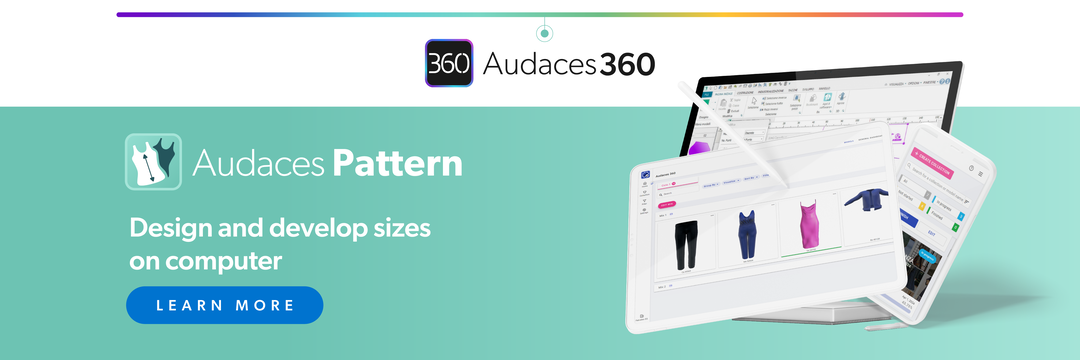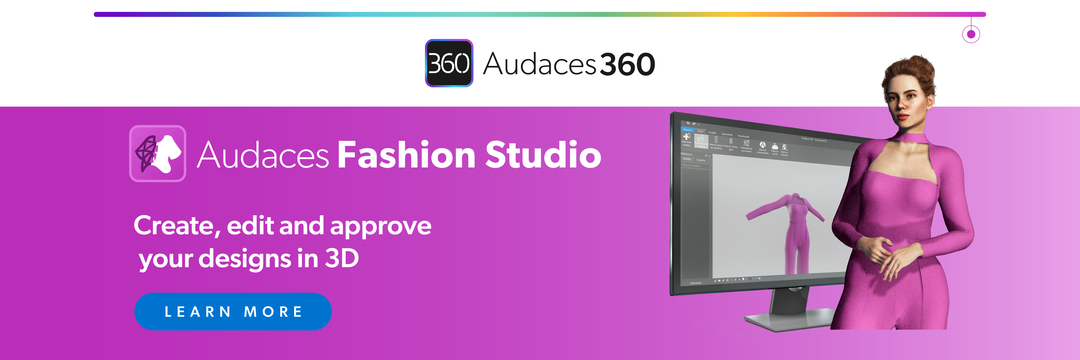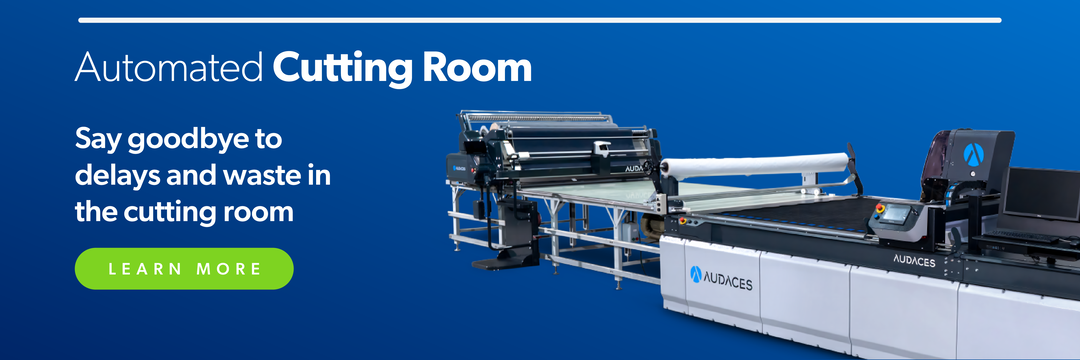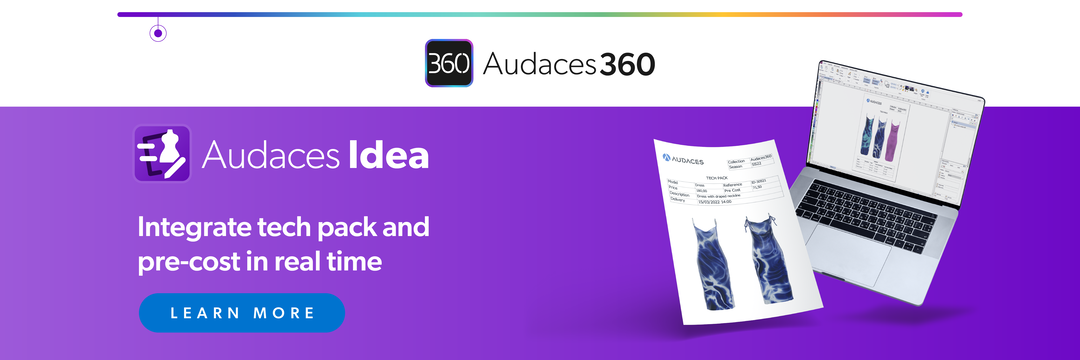Summary
- Cuffs are not simple sleeve endings: they add personality and structure to a garment.
- Choosing the right one can impact both the design and the pattern making process.
- Want fresh fashion news straight to your inbox? Subscribe to our newsletter!
When creating clothes, small details can make a big difference. One of these details is the cuff, or the finish at the end of a sleeve. It may seem simple, but the type of cuff you choose can change the look and feel of the entire garment.
It affects how pattern makers construct the garment and develop the pieces of patterns. That’s why it’s important to understand how each cuff works and when to use it.
In this article, you’ll discover 9 types of cuffs that every pattern maker should know. These options will give you more creative and technical control over your work.
Happy reading!
Sumário
Why is it important to know the different types of cuffs?
The type of cuff you choose can change the entire look and feel of a piece. From formal shirts to casual blouses or jackets, cuffs contribute to the garment’s overall structure, style, and functionality.
Each type of cuff also presents specific construction methods. Some require buttons or cufflinks, while others are sewn directly into the sleeve with decorative finishes. By knowing the technical aspects of each option, you can plan the pattern more efficiently, saving time in production.
Fashion trends often influence which types of cuffs are most in demand, so staying informed helps you create modern designs. Being able to suggest or implement a specific cuff style gives your work more value.
Pairing the right collar and cuffs can also elevate the garment’s aesthetic. That’s why this knowledge is important: to translate it into smarter decisions and better garments.
In short, knowing different types of cuffs is about precision, creativity, and staying relevant in a competitive market.
9 types of cuffs to use in your collection
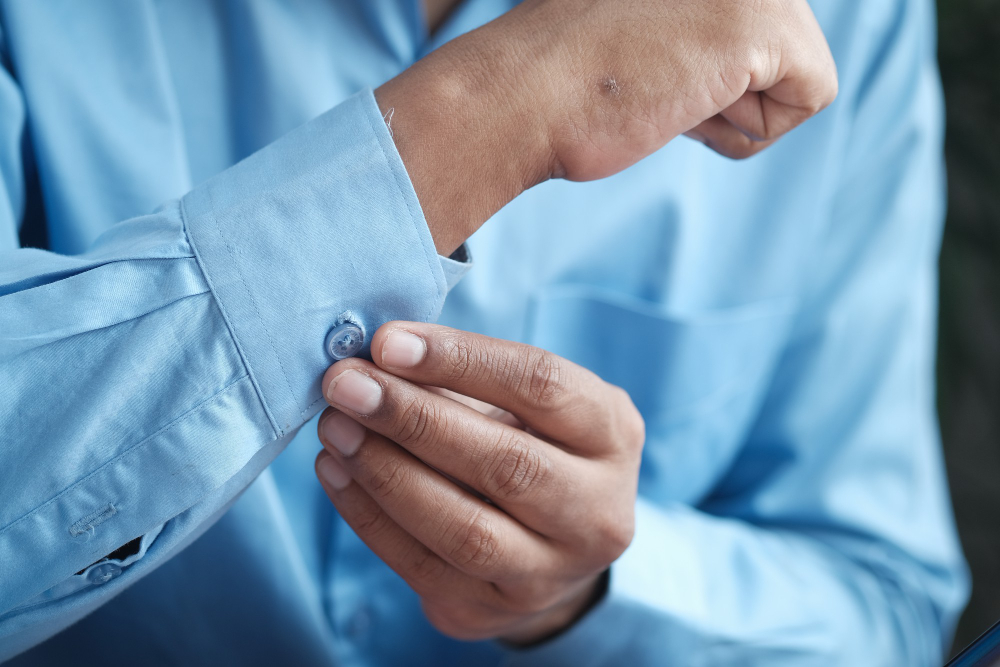
1) Barrel cuff
The barrel cuff is one of the most common types of cuffs. It features a straight, rectangular shape with one or more buttons that fasten the cuff at the wrist. It’s a practical and easy to wear design, making it a versatile choice for many garment styles.
Its simplicity allows for variations in size, button placement, and even fabric contrasts. It’s a reliable option that offers comfort without compromising on a clean look.
2) French cuff
The French cuff is a classic and elegant choice typically associated with formal wear. It’s twice as long as a standard cuff and folds back over itself, fastened with cufflinks rather than buttons. This detail adds sophistication and a sense of tradition to any shirt.
Because of its refined appearance, the French cuff is perfect for tuxedo shirts and tailored garments.
This choice offers a chance to play with accessories, allowing to personalize the look through stylish or understated cufflinks.
Learn more: 7 collar types every pattern maker should master
3) Convertible cuff
Convertible cuffs offer the best of both worlds. You can wear it with buttons like a barrel cuff or with cufflinks like a French cuff.
Designed with dual fastening options, it’s a smart choice for those who want flexibility in how they wear their garments.
This cuff is ideal for consumers who move between casual and formal settings. It works well in men’s and women’s shirts alike and is especially useful in travel or business wardrobes.
4) Single cuff
The single cuff is a clean option, traditional in men’s dress shirts, especially for formal occasions in European tailoring. It does not fold back like the French cuff and is fastened with cufflinks rather than buttons.
Though less common today, the single cuff has a minimalist charm and is ideal for bespoke or ceremonial garments. Its lack of extra fabric makes it ideal for structured and slim-fitting pieces.
Discover how to create perfect patterns in just a few clicks with our complete ebook!
5) Cocktail cuff
Also known as the “James Bond cuff,” the cocktail cuff combines elegance with practicality.
It is a turned-back cuff like the French cuff but fastens with buttons instead of cufflinks. This creates a formal look without the need for extra accessories.
This type of cuff adds character and flair to a shirt and is ideal for semi-formal or elegant-casual settings. It’s a perfect option for designers looking to add a touch of luxury while keeping things functional for the wearer.
Learn more: Full guide to mastering apparel design through patternmaking
6) Double French cuff
A variation of the French cuff, the double French cuff is even more prominent and formal. It features an extended length that folds back on itself, just like the traditional French cuff. However, with a bolder profile that draws more attention.
The style is ideal for evening wear, weddings, or other special occasions. It provides more surface area for luxurious fabrics and elevates the garment’s sophistication through both size and detail.
7) Rounded cuff
Rounded cuffs feature gently curved edges instead of the straight corners seen on barrel cuffs. This subtle change softens the appearance of the cuff and adds a touch of elegance to the design.
They are a great choice for blouses, casual shirts, or any piece where a softer visual is desired. Rounded cuffs also pair with delicate fabrics and can enhance the flow and harmony of a garment’s design.
Learn more: 4 types of pleats to take your designs to the next level
8) Mitered cuff
The mitered cuff stands out thanks to its angled corners, which form a diagonal cut where the cuff meets the sleeve.
This small detail gives the cuff a more tailored and architectural appearance, making it a favorite in contemporary menswear.
It works especially well in structured garments and is a go-to to convey a sharp, professional look. The mitered cuff is a great way to add interest to a classic design without going overboard.
9) Decorative cuff
Decorative cuffs focus more on style than function and often feature embroidery, lace, ruffles, contrasting fabrics, or unique shapes. They are ideal to make a statement and bring creative flair to a garment.
These cuffs are common in women’s fashion, stage costumes, and trend-forward collections. For pattern makers and designers, decorative cuffs are an opportunity to experiment with textures and materials.
Learn more: How can basic block patterns help your fashion production?
How can you choose the right types of cuffs for your designs?
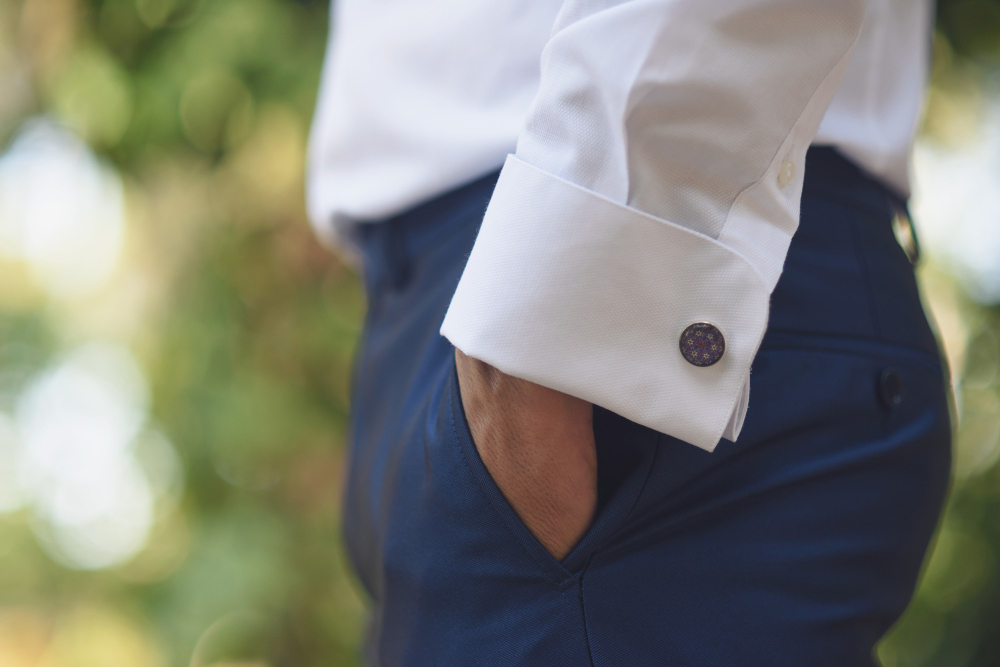
Understand your target audience
Choosing the right type of cuff starts with knowing who will wear the garment. Different audiences have different needs when it comes to style, comfort, and function.
For example, a cuff that works well for a corporate shirt may not suit a relaxed, fashion-forward look aimed at younger consumers.
Age, lifestyle, and even cultural preferences can influence what cuff styles feel appropriate or desirable. A fashion-conscious buyer might prefer bold, decorative cuffs. Meanwhile, a more traditional customer may lean toward classic barrel or French cuffs.
Understanding these expectations helps you design pieces that resonate with your market.
Consider the style of each garment
The type of cuff you use should complement the overall style of the garment. Matching the cuff to the design keeps the garment visually consistent and functionally appropriate.
Each garment has its own visual language. Adding a cocktail cuff to a casual piece, for instance, might confuse the style or feel out of place. On the other hand, using a barrel cuff in a relaxed shirt reinforces a laid-back aesthetic.
Remember the cuff should support the message and purpose of the overall design.
Learn more: 8 essential types of pockets to elevate your pattern making
Keep up with fashion trends
Fashion is constantly evolving, and cuff styles change with it. Staying up to date helps you keep your work relevant and appealing in a competitive market.
Runway shows, street style, and seasonal collections can all be sources of inspiration.
If oversized cuffs, contrast stitching, or bold closures are trending, consider how to adapt those elements to your collection. Even a small detail can make your design feel modern and desirable.
That said, it’s important to balance trends with functionality and brand identity. Not every trend will suit your target audience or product line. Use trends as a guide, not a rule, and incorporate only what enhances your design.
Consider the fabric and its structure
The type of fabric you choose has a direct impact on which cuff will work best.
Some fabrics are too thick or too delicate for certain cuff constructions. For example, heavy denim may not fold cleanly into a French cuff.
Choosing the right cuff for your fabric not only improves the garment’s appearance but also makes construction smoother. A good match between fabric and cuff means better finishing, less frustration during sewing, and a better final product.
Learn more: Learn how to adjust patterns for fabrics that shrink
Perfect your cuff patterns with the support of Audaces Pattern
Audaces Pattern is the perfect solution to simplify and speed up your pattern-making process. With intuitive digital tools and smart automation, you can create, edit, and grade patterns efficiently.
Save valuable time and can focus more on the creative and technical decisions that truly shape your collection.
When changes happen, you won’t have to start from scratch. The software makes it easy to adjust measurements, reshape pieces, and test new design variations with precision and speed.
To take it even further, Audaces Pattern integrates seamlessly with the full Audaces ecosystem. This connection allows you to plan, develop, and produce with consistency and accuracy across every stage.
It’s a complete solution that empowers pattern makers to stay productive and in control, even under tight deadlines.
Discover Audaces360 and unlock a world of possibilities for fashion design and production. Explore our comprehensive suite of solutions today!
FAQ
The type of cuff you choose can change the entire look and feel of a piece. From formal shirts to casual blouses or jackets, cuffs contribute to the garment’s overall structure, style, and functionality.
They include barrel cuff, French cuff, single cuff, and convertible-cuff.
Understand your target audience, keep up with fashion trends, and consider the fabric and its structure.


